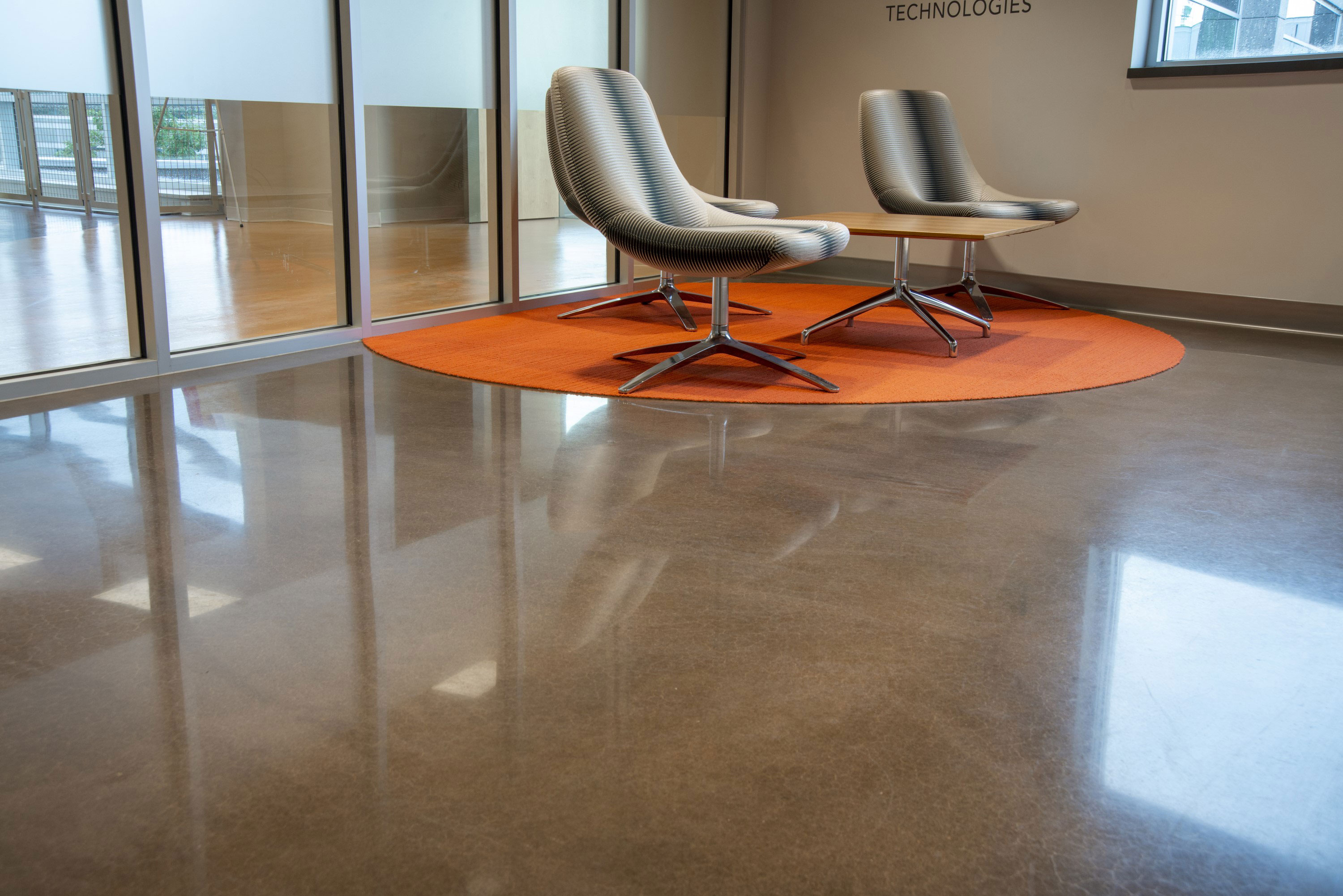
No longer reserved for manufacturing plants and warehouses, concrete flooring has been infiltrating retail stores, trendy hotels and restaurants, offices, and even homes over the past 15 years. With concrete’s relative ease of maintenance and long-term
cost savings, combined with its durability and versatility of aesthetic, it’s little wonder that this flooring solution is continuing to grow in popularity.
For all its advantages, however, the comparative ease with which both polished and non-polished concrete stains and chemically etches is a definite disadvantage. In order to combat this issue, three types of products have been developed.
1. High-solids topical coatings have been widely rejected, due to their insufficient adhesion to the substrate and failure when there is high vapor drive.
2. Guards are not susceptible to the same vapor drive and adhesion problems. Guards are also known as semi-topical coatings/sealers, because while they sit on top of the concrete surface, they also lightly fill in
its surface pores. Guards successfully protect concrete floors from stain and etch, while also creating gloss on non-polished surfaces and augmenting gloss on polished surfaces. Their primary drawback, however, is the need to recoat due to wear.
The number and frequency of recoats required is largely dependent on environment in which they are used, particularly foot and/or wheel traffic.
3. Penetrating sealers, as indicated in the name, fill in surface pores to prevent stain and etch. When using a penetrating sealer, none of the product remains on the surface of the concrete, unlike topical and semi-topical coatings.
This penetration means that foot and/or wheel traffic, stain- and etch-causing substances, as well as sealant-infused cleaning and burnishing pads make direct contact with the concrete surface, instead of with a coating. This is the reason penetrating
sealers are somewhat less effective against stain and etch than guards, but it is also the reason penetrating sealers wear less and require fewer reapplications than guards.
The Betco® Crete Rx™ system offers both a penetrating sealer in the form of our
Stain Defense product, as well as a new guard in the form of our LiquiShield product. Wondering which product may be right for your concrete or terrazzo floor?
LiquiShield performs best in these applications:
- Floors that require heavy stain protection, such as cafeterias
- Providing gloss and protection to non-polished concrete floors
- Terrazzo floors that cannot be polished due to:
-Bleed off from divider strips (zinc, aluminum, brass, or PVC)
-Topical dyes that bleed when dry polished
-Non-cementitious terrazzo
- Combination floors with topical guard/penetrating sealer for quick and easy avoidance of tedious edge work:
-Polish the floor using the Crete Rx system
-Apply LiquiShield along the edge, 3–4 inches wide, and it will shine like
the rest of the floor
-With little-to-no wear at the edges, LiquiShield will last for many years using the Crete Rx daily cleaning program
Stain Defense penetrating sealer performs best in these applications:
- Floors with very heavy traffic, such as grocery and retail floors or warehouse floors exposed to heavy forklift traffic
- Floors that require an extremely high DOI (distinctness of image)
- Floors that require high levels of scuff and scratch resistance
- Lowering annual maintenance costs associated with annual and/or semi-annual recoats
| Characteristics | LiquiShield | Stain Defense |
| Initial gloss rating | Excellent | Excellent |
| Clarity of image | Good | Excellent |
| Wear and durability in average traffic | Good | Excellent |
| Wear and durability in heavy traffic | Fair | Excellent |
| Scuff and scratch resistance rating | Good | Excellent |
| Stain and etch protection rating | Excellent | Good |
| Annual recoat maintenance required | Yes | No |